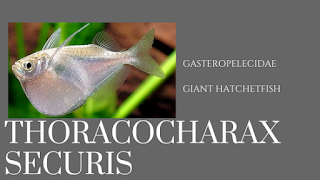After a short break I will continue to inform you about aquarium fishes starting with Black Tetra.
General Specifications
Latin Name: Gymnocorymbus ternetzi.
Geographic Origin: South America, Amazon River, Negro river, Argentine river.
Living Area: Small, slow-flowing rivers, particularly dangling tree branches and shrubs.
Nutrition Format: They show more interest in plant foods than other tetra species. For this reason, vegetable feeding should not be neglected as much as it feeds on animal foods.
Behavior: Peaceful
Behavior to Their Type: Peaceful
Swimming Level: Medium-Surface
Gender Discrimination: Sex discrimination is not easy. If reproduction is considered, it should be taken in groups. Females are bigger, have longer fins. Men's colors are darker.
Reproduction
Spreading eggs. It's easy. The temperature is 28-30 ° C. Eggs can be prevented from ejaculating by stretching the bottom web. After breeding, the adult fish should definitely take another aquarium. The offspring come out from the egg 18-36 hours. After a few days they start swimming freely. For the first few days, the offspring must feed on infuseria. Then you can use microworm and artemia. Aquariums should be as dark as possible because they are sensitive to light and eggs.
Living Medium
Temperature: 23 - 28 ° C
Maximum Sizes: 6 cm.
Water Hardness: 2 - 20 ° d
pH: 5.5 - 7.0
General Comments:
It should be viewed in at least six groups as it is in all tetra groups. When they feed in the form of herds, the fish are the ones that can get very comfortable. They are durable fish when appropriate water conditions are met. They can be seen in bituminous aquariums. Next to the plants, mangrove roots and hiding places should be formed. The level of the plants should be up to the level of love that this swim is swimming in. In the habitat, it is made to look at an aquarium where the plants are floating in the light current and the light is formed by the shadows.






